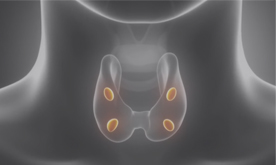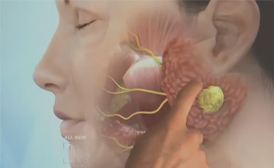The nasal cavity is divided by a wall made of cartilage and thin bone called the nasal septum, which ideally runs through the center of the nose to create the left and right nostrils. In approximately 80 percent of people, the septum is displaced, creating one nasal passage that is slightly larger than the other. However, this doesn’t cause breathing problems. But in some people, the septum leans significantly either to the right or the left. This condition, called a deviated septum, results in an obstruction to the nasal airway, reducing the ability to breathe correctly.
Causes of Nasal Airway Obstruction
Nasal airway obstruction is a very common condition in the United States that can be either temporary or chronic. The condition can be caused by a number of anatomic and non-anatomic factors, including:
- Deviated septum. A deviated septum causes breathing in one nostril to be worse than in the other. A deviated septum is caused by fractures or other trauma, a congenital disorder, or drug use. This can cause breathing problems and a predisposition to sinusitis. This condition can be fixed with nasal airway surgery.
- Turbinate hypertrophy. Enlargement of the turbinates (called turbinate hypertrophy) causes obstruction of the nasal cavity as well. Initially nasal sprays or nasal irrigation with salt water is used to see whether the turbinates respond and shrink. In not, surgery should be considered to shrink this tissue.
- Inflammation and swelling due to allergies or sinus problems. Allergies and sinus problems can cause swelling of the nasal lining, leading to blockage and poor airflow in the nose. In addition to nasal congestion, those who suffer from allergic rhinitis and sinusitis can experience sneezing, thin nasal drainage, or recurrent sinus infections, which can add to the obstruction problem.
- Nasal polyps. Polyps are noncancerous, grape-like growths that can appear on the nasal lining, which can plug the nose, making breathing more difficult. Polyps usually occur in individuals with asthma or allergic rhinitis and can contribute to worsening sinus conditions.
- Nasal tissue enlargement. Adenoid tissue in the back of the nose usually shrinks during the late teen years. However, if the tissue fails to shrink, the enlarged tissue can cause chronic sinus infections, resulting in airway obstruction. Enlarged adenoids can also be a sign of a potential tumor.
- Foreign bodies. Foreign objects such as beads, buttons, raisins, crayons, peanuts, and pencil erasers can become stuck in the nostrils and obstruct the nasal airway.
- Medications. Nasal decongestant sprays and drops can contribute to nasal stuffiness if they are overused. These over-the-counter medications may provide initial relief for congestion, but using these products for longer periods of time can have a rebound effect, resulting in nasal passageways that are more swollen than before the products were used. The hormones in certain birth control pills can also cause swelling of the nasal lining and promote obstruction of the airways. Other medications, including those used to treat high blood pressure, can have the same effect.
Treatments for Nasal Airway Obstruction — Surgery and More
Nasal airway obstruction is a very common problem and Dr. Larian strives to provide each of his patients with the best possible chance to reverse the obstruction. Most patients do not need surgery, The problem must be carefully assessed, diagnosed and treated.
Anti-Inflammatory Nasal Sprays
In a great majority of cases, nasal airway obstructions can be corrected without surgery. Anti-inflammatory nasal sprays can help improve airflow for individuals who experience impaired breathing from allergic rhinitis, sinusitis or other inflammatory causes. Nasal sprays are made of corticosteroids, which mimic an anti-inflammatory substance found naturally in the body called cortisol. Corticosteroids effectively work to reduce congestion and swelling in the nose as well as open up nasal airways by constricting blood vessels. Patients who use anti-inflammatory nasal sprays can find immediate relief from their allergy and sinus symptoms. Improvements usually start after a one-week delay, as such patients must be warned and encouraged to continue using the medications, and not to give up too quickly.
Septoplasty
A septoplasty is a nasal airway surgery procedure that aims to correct a deviated nasal septum to help improve an individual’s nasal airflow. During the procedure, an endoscope is used to view the size and shape of the septum. Next, the surgeon creates hidden incisions within the nose. Then, the mucosal lining of the septum is detached and the crooked septum cartilage and bone is straightened. Once the septum is corrected, it is held in place with sutures and at times soft nose splints while it heals. Dr. Larian doesn not use nasal packing. The entire procedure takes approximately 30 minutes, depending on the complexity of the deviation. To learn more about this effective operation, please contact Dr. Larian today.
Turbinate Reduction Treatments
Turbinate reduction surgery aims to decrease the size and thickness of the turbinates and the mucous membranes surrounding them to correct obstruction in the nasal passages. There are three kinds of turbinate reduction surgery offered at our practice: submucous resection, radiofrequency reduction, and turbinectomy. These three treatment options have helped many of our patients find the relief they need and improve their breathing. The choice of turbinate procedure is individualized to each patient’s particular problem and need.
- Submucous Resection
- Radiofrequency Reduction
- Turbinectomy
Submucous Resection
Submucous resection, or SMR, is a nasal airway surgery procedure that corrects obstruction caused by enlarged turbinates. The procedure involves making a small incision on the mucousal lining and removing the excess tissue and bone under the surface.
Radiofrequency Reduction
Temperature controlled radiofrequency is a state-of-the-art non-surgical approach to reduce the size of the turbinates. This fairly new minimally-invasive procedure uses a small electrode that is placed within the nasal passageways to heat and shrink turbinate tissue. The procedure is temperature-controlled, which allows for a safe, effective, and precise delivery of energy to the treated areas while preserving the normal function of the turbinates. Patients who undergo radiofrequency reduction experience a shorter recovery time than those who undergo submucous resection. Please contact Dr. Babak Larian for more information on this effective treatment option.
Turbinectomy
In addition to submucous resection and radiofrequency reduction, Dr. Larian also provides turbinectomy to treat nasal airway obstruction. Turbinectomy surgery involves removing large portions of tissue from the enlarged turbinates to resolve nasal obstruction. When done correctly this can be a very effective way to treat nasal obstruction.







